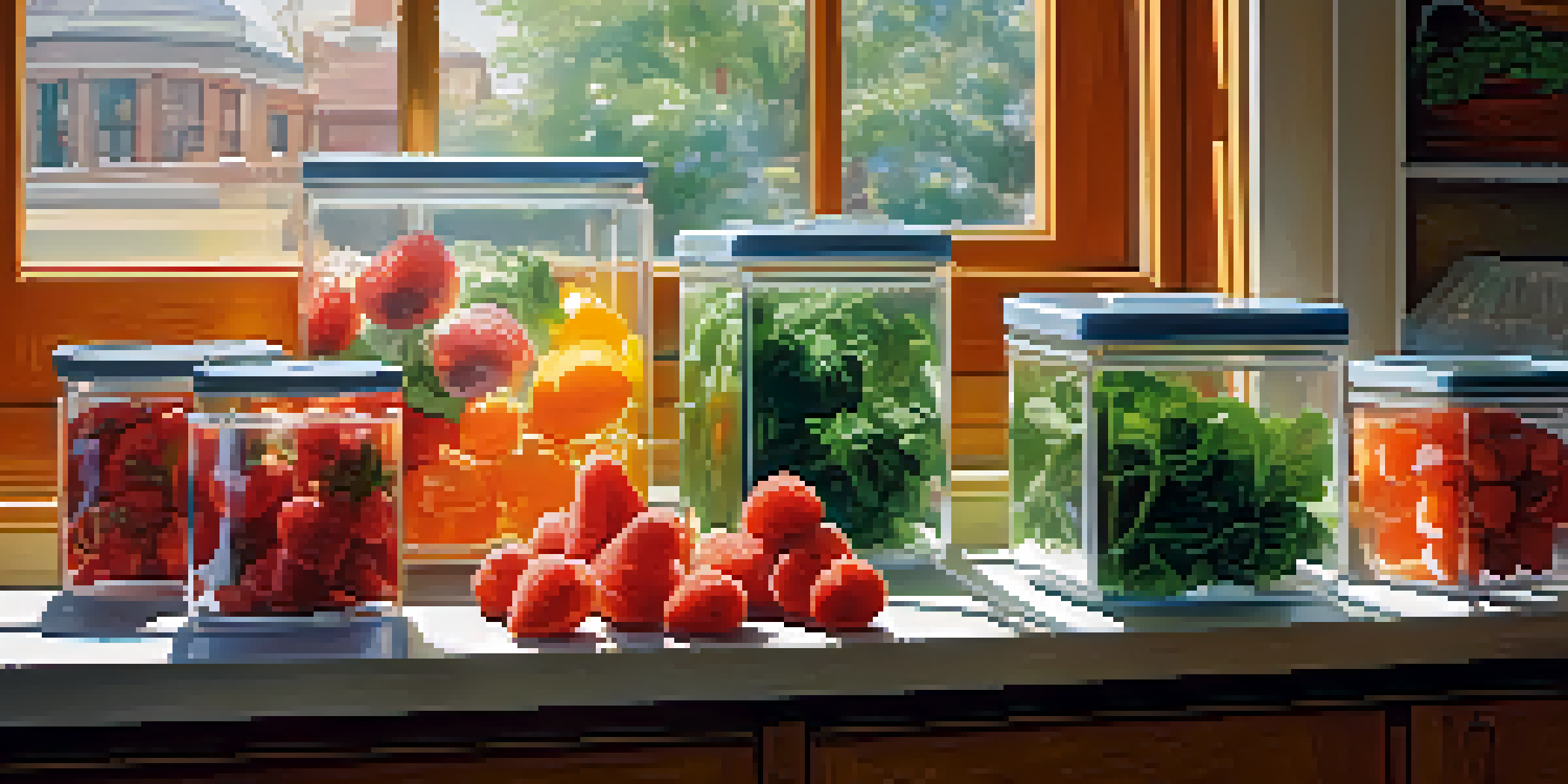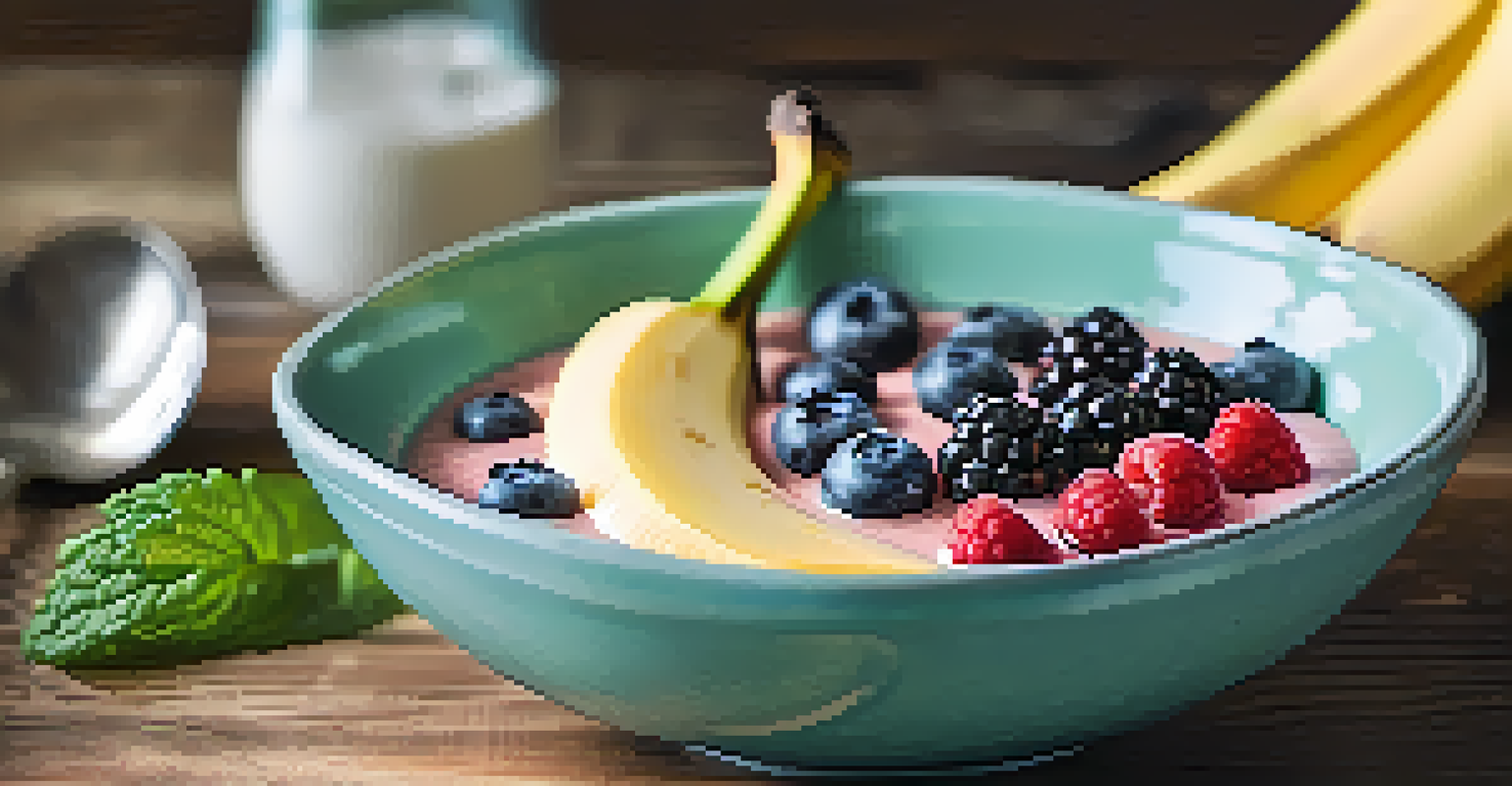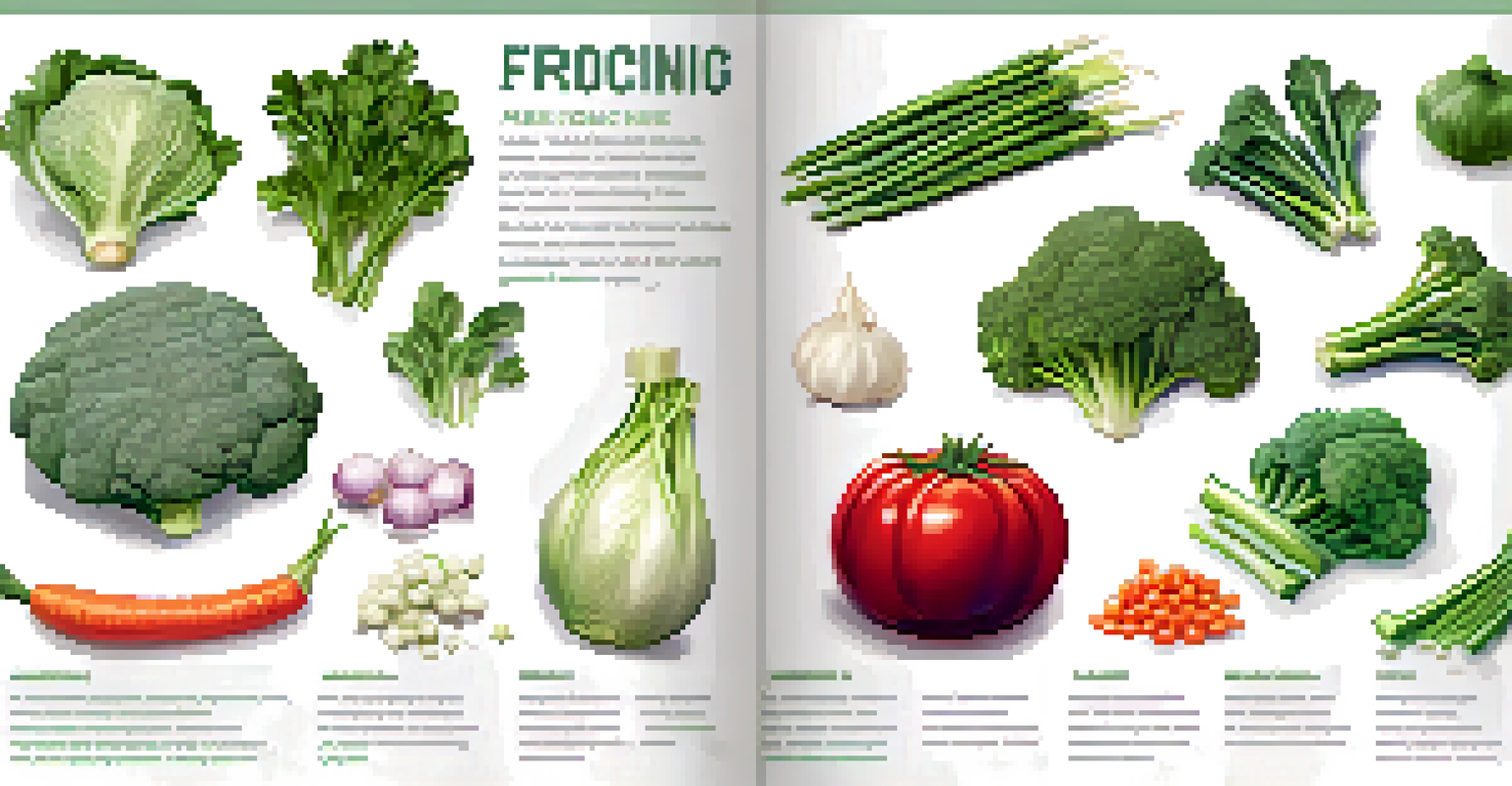Freezing Fruits and Vegetables: A Vegetarian's Guide

Why Freezing is a Smart Choice for Vegetarians
Freezing fruits and vegetables is a fantastic way to preserve their freshness and nutritional value. For vegetarians, having a stock of frozen produce means you can enjoy your favorite flavors year-round, regardless of the season. Plus, it allows you to reduce food waste by saving surplus produce before it spoils.
The freezer is a marvelous thing. It gives you the ability to preserve the freshness of fruits and vegetables for months.
When you freeze fruits and vegetables, you lock in vitamins and minerals that might otherwise degrade over time. This method is especially beneficial for busy lifestyles, ensuring you always have healthy options on hand for quick meals or snacks. Whether you're whipping up a smoothie or a hearty vegetable stew, frozen produce can be a lifesaver.
Moreover, buying in bulk when fruits and vegetables are in season can save you money. By freezing them, you can take advantage of sales and store them for later use, making your vegetarian meals both economical and nutritious. It's a win-win situation!
Choosing the Right Fruits and Vegetables to Freeze
Not all fruits and vegetables freeze equally well, so it's important to choose wisely. Berries, bananas, and leafy greens tend to freeze beautifully, while water-heavy produce like cucumbers and lettuce may not fare as well. Understanding which items hold up best can help you create a more successful frozen stash.

For instance, berries can be frozen directly without blanching, while vegetables like broccoli and carrots benefit from a quick blanch before freezing. Blanching helps to preserve color, flavor, and nutrients, making your meals more appealing once you thaw them. It’s a simple step that can make a big difference.
Freezing Preserves Nutritional Value
Freezing fruits and vegetables locks in their vitamins and minerals, ensuring you always have healthy options available.
Additionally, consider the ripeness of your fruits and vegetables. Freezing them at their peak freshness ensures that you maximize flavor and nutrition. So, when you're stocking up, aim for produce that is ripe, firm, and blemish-free for the best results.
The Essential Freezing Process: Step-by-Step
Freezing fruits and vegetables might seem straightforward, but following a few key steps can ensure optimal results. Start by washing and preparing your produce—this may involve peeling, chopping, or slicing depending on the item. Taking the time to properly prep will make it easier to use later on.
Eating well is a form of self-respect.
Next, for vegetables, blanching is a crucial step. Simply immerse them in boiling water for a few minutes, then transfer them to an ice bath to stop the cooking process. This method helps to maintain texture and flavor, making your frozen veggies taste just as fresh as when you picked them.
Finally, portion your fruits and vegetables into airtight containers or bags, removing as much air as possible to prevent freezer burn. Label each container with the date to keep track of freshness. This organized approach will save you time and frustration when it’s time to cook.
Best Practices for Storing Frozen Produce
To keep your frozen fruits and vegetables in top condition, proper storage is key. First, ensure your freezer is at the right temperature—ideally 0°F (-18°C) or lower. This level of cold will keep your produce frozen solid and minimize the risk of freezer burn.
When stacking your items, try to store them in a way that allows for good air circulation. Avoid overpacking your freezer, as this can hinder air flow and lead to uneven freezing. A little breathing room will help maintain the quality of your frozen goods.
Proper Preparation is Crucial
Taking the time to wash, peel, and chop produce before freezing enhances the flavor and texture of your meals.
Lastly, organize your freezer by grouping similar items together. This makes it easier to find what you need when you’re ready to cook. Plus, it helps you keep track of what you have on hand, reducing the chances of letting anything go to waste.
Defrosting Techniques for Perfect Results
Defrosting your frozen fruits and vegetables can make a significant difference in texture and taste. The best method is to transfer them to the refrigerator and let them thaw slowly overnight. This gradual process helps retain moisture, ensuring your produce remains delicious when cooked or eaten raw.
If you’re short on time, you can also use the microwave’s defrost setting. Just be careful not to overheat, as this can lead to uneven thawing and a mushy texture. For vegetables, you might even consider cooking them directly from frozen, which can preserve their crispness and flavor.
For fruits, especially those that will be used in smoothies or baking, you can throw them in frozen, allowing the other ingredients to blend seamlessly. This way, you enjoy all the benefits of frozen produce without compromising on taste or quality.
Creative Ways to Use Frozen Fruits and Vegetables
Frozen fruits and vegetables are incredibly versatile and can inspire a myriad of delicious dishes. For instance, frozen berries make excellent additions to smoothies, oatmeal, or yogurt parfaits, providing a burst of flavor and nutrition. You can also toss them into baked goods like muffins or pancakes for added sweetness.
Vegetables can easily elevate your meals, too. Add frozen broccoli, peas, or spinach to stir-fries, casseroles, or pasta dishes for a nutritious boost. The convenience of having these items on hand means you can whip up a healthy meal in no time, even on your busiest days.
Avoid Common Freezing Mistakes
To maintain quality, avoid overcrowding your freezer and always label your items to keep track of freshness.
Additionally, consider using frozen produce in soups or sauces. They can add depth and flavor without the hassle of prepping fresh ingredients. With a little creativity, your frozen fruits and vegetables can become the stars of your vegetarian meals, rather than just a backup plan!
Common Mistakes to Avoid When Freezing Produce
While freezing is a great way to preserve produce, there are some common pitfalls to avoid. One major mistake is not properly preparing your fruits and vegetables before freezing. Failing to wash, peel, or chop them can lead to a less enjoyable eating experience later on, so take the time to prep each item.
Another mistake is overcrowding your freezer. When items are packed too tightly, they may not freeze evenly, which can result in mushy or freezer-burned food. Instead, freeze items in smaller batches to ensure they freeze quickly and thoroughly.

Lastly, don’t forget to label your frozen goods! Without labels, you might forget what you have and how long it’s been in there. This simple step can save you from the disappointment of using old produce that has lost its flavor and quality.